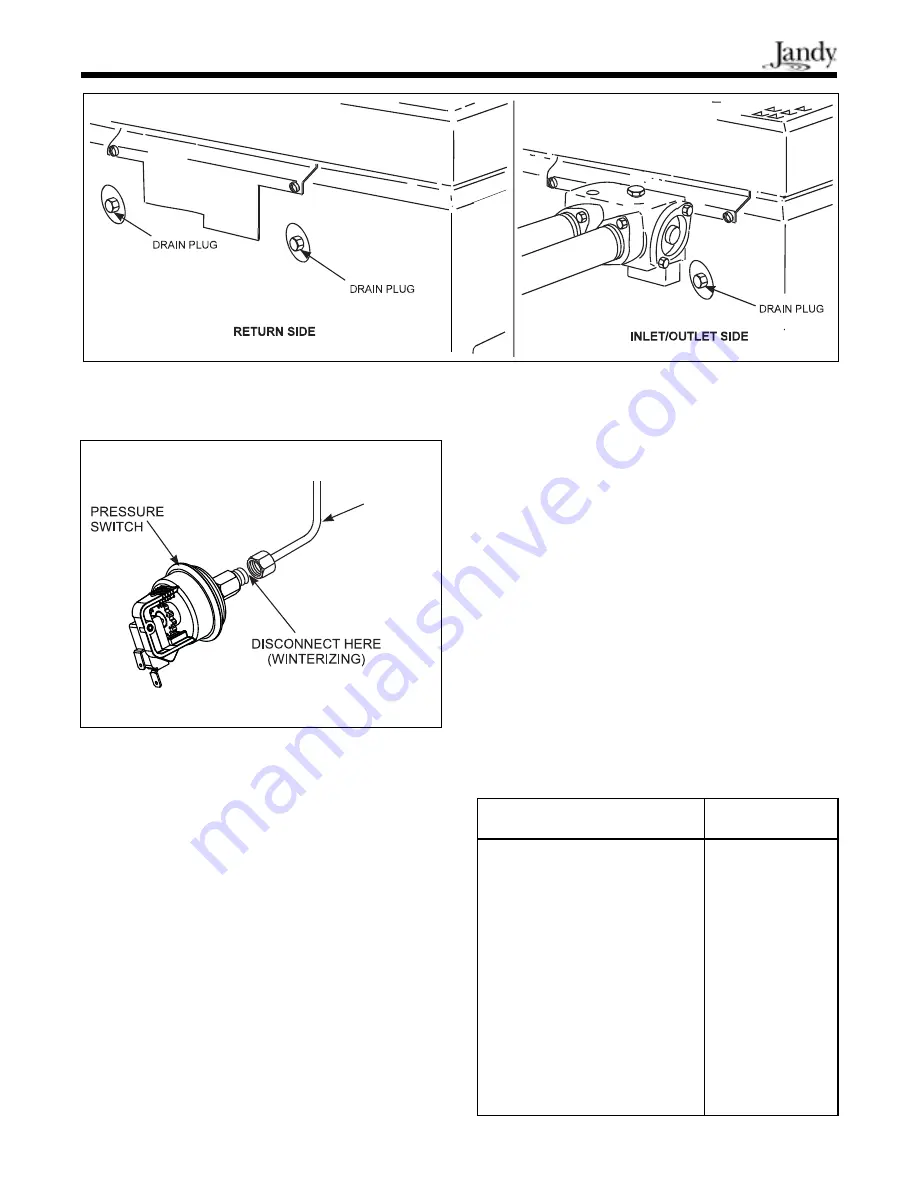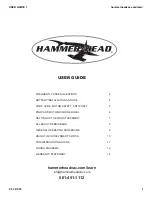
Page 16
and in the heater tubes. To protect your heater from
damage, you must take the precaution of maintaining
the ph factor of the pool water between 7.4 and 7.6.
3F-2. For Spa
The control of chemical balance in a spa is more
critical than in a swimming pool for satisfactory
heater operation.
Spas are used more often than a swimming pool.
The size, high water temperature, and heavy usage,
mean chemical values in a spa can differ greatly. The
lack of the right chemical content can result in
unsanitary water conditions, and affect the life of the
heater.
Maintaining sanitary water conditions in a spa
can only be done by regular water changes and the
proper addition of sanitizing chemicals. See Table 8
for the recommended levels for certain mineral con-
centrations.
5. Disconnect the pressure switch from the
copper tubing (see Figure 21).
6. Use compressed air to blow out any standing
water in the heat exchanger.
In areas subject to only short freeze periods, turn
off the heater and run the filter pump continuously for
the length of the cold period.
3F. Water Chemistry
3F-1. For Pool
The mineral content of swimming pool water
increases daily, due to natural evaporation and the
addition of algicidal and sanitizing chemicals. If you
allow the mineral concentration in the pool to get too
high, the minerals will precipitate out of the water and
deposit on the walls of the pool, in the filter system,
Figure 20. Heater drain locations.
Figure 21. Pressure switch copper tubing.
Table 8. Mineral Concentration Levels
Test
Recommended
Level
Free Chlorine or
1.0 to 3.0 ppm
Total Bromine
2.0 to 4.0 ppm
pH
7.2 to 7.6
Total Alkalinity (TA)
100 to 150 ppm
Calcium Hardness (CH)
200 to 400 ppm
Langelier Saturation Index (LSI)
-0.5 to +0.5
Cyanuric Acid
30 to 150 ppm
Total Dissolved Solids (TDS)
Less than 1500
ppm
Copper
0 ppm
COPPER
TUBING













































